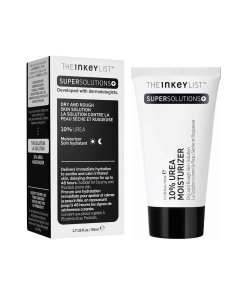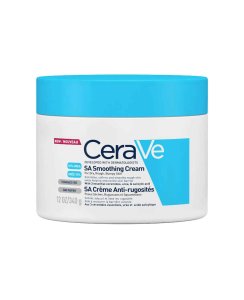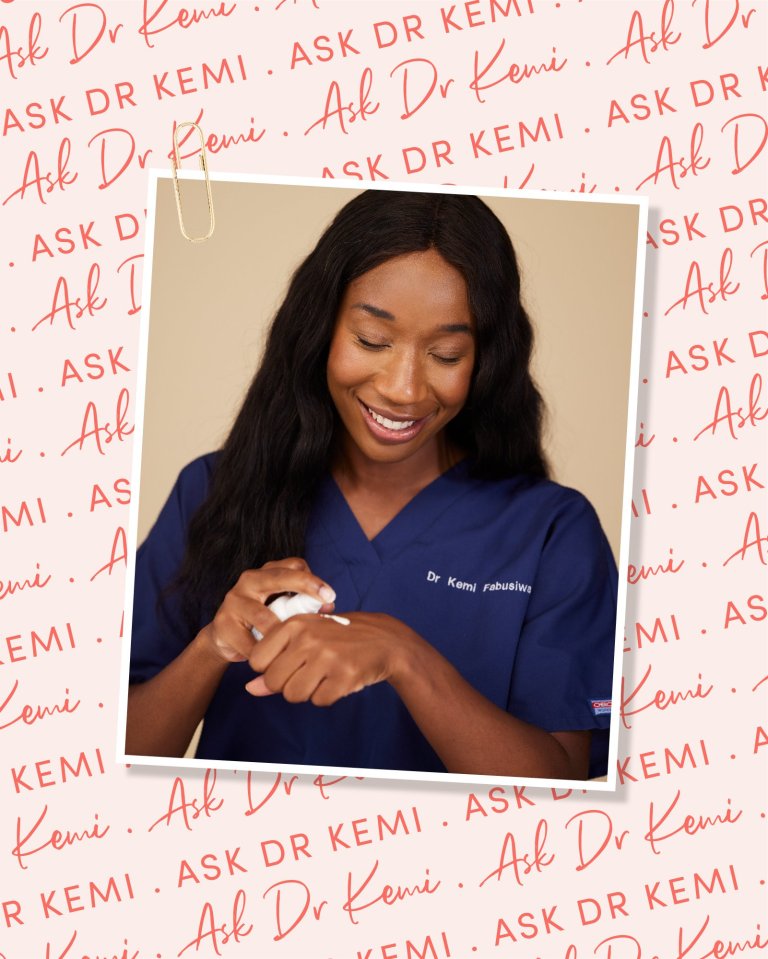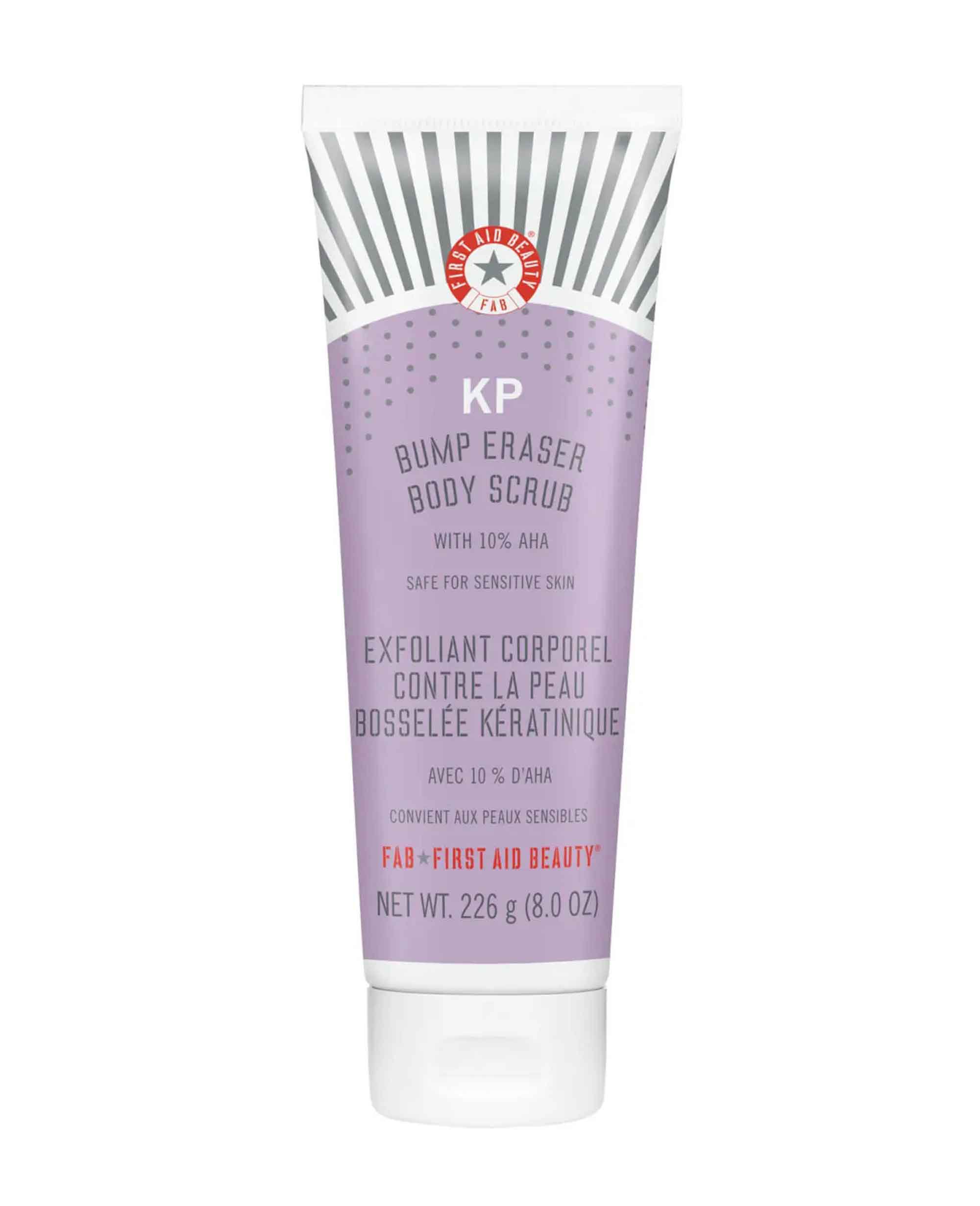Keratosis pilaris, also known as ‘chicken skin’ or ‘strawberry skin’, is a dry-skin condition that can occur anywhere on your body. It’s a pretty common condition, and one that you’ll mostly find cropping up on your arms, thighs, legs and bum.
Under the hundreds of layers we wear in winter, it’s probably something you’re a lot less likely to notice. But as the summer months roll around, you might find that keratosis pilaris (KP) has decided to pitch up for the warmer weather.
Why does keratosis pilaris show up on our skin?
Normally, the skin cells around your pores naturally exfoliate and shed their lining. Keratosis pilaris occurs when the skin cells aren’t being shed and instead accumulate, blocking the follicles, which leads to a raised, bumpy surface that looks a bit similar to having permanent goosebumps.
On lighter skin, the bumps may look pink, red or skin-coloured. With darker skin, the bumps can also be skin-coloured, or they can become hyperpigmented, dark brown and even black. You might also find that the skin can feel rough, textured and sometimes even itchy.
What causes keratosis pilaris?
Some of us are just genetically predisposed to keratosis pilaris, and so if your parents had it, you might find you have it too. Other people who have dry skin conditions including eczema, psoriasis and those prone to allergies such as hay fever are also likely to get it.
Like many other dry-skin conditions, keratosis pilaris gets worse in the winter when there is less humidity in the air. However, that doesn’t mean there aren’t avenues you can take to prevent or minimise this skin condition.
What can you do to manage keratosis pilaris?
Keratosis pilaris isn’t dangerous, and it’s sometimes considered to be a normal variant of the skin. You shouldn’t feel pressured to ‘fix’ it and can absolutely leave it alone if you want to.
If you’re not liking the appearance or are finding it uncomfortable and itchy, there are a few options you have to manage it. The good news is, they’re pretty easy and affordable, from changes you can make at home, to products you can buy in your local store and, in some cases, treatments a doctor or aesthetician can provide.
How to treat keratosis pilaris at home:
- Avoid extremely hot showers: a super-hot shower might feel tempting, especially on a colder morning, but these are a nightmare when it comes to stripping your skin of its natural oils and moisture. Long showers (even at a normal temperature) can leave your skin feeling equally stripped. Letting yourself prune in the shower can be exacerbating your KP (not to mention racking up that water bill), so try to keep showers to a minimum and turn that temperature down.
- Talking of showers, avoid using bar soap (you know, the traditional sort). Bar soaps break down the protective oils that make up your natural skin barrier, so swap it out for a gentle, hydrating body cleanser instead.
- Use physical exfoliators like exfoliating mitts and scrubs. These help to physically lift away the dead skin cells that are clogging your pores. Be careful not to buff too hard as you can inflame the skin and cause further irritation and hyperpigmentation. The goal here is to gently lift up the dead and dying skin cells. If the keratosis pilaris is on your face, use chemical exfoliants rather than physical ones.
- Stay away from highly scented body and shower gels. Natural fragrances can also strip the skin and lead to hypersensitivity.
Products that can help to minimise keratosis pilaris:
As mentioned, keratosis pilaris is caused by dead skin cells not naturally shedding from the surface of the skin. One solution is helping to clear that accumulation of debris by using a physical or chemical exfoliant to break down the dead skin cells and keep those pores clear and smooth.
Chemical exfoliants include alpha hydroxy acids such as glycolic, mandelic or lactic. Glycolic acid is the smallest in molecular size and so is best at exfoliating, however, it can cause the most irritation, especially with sensitive skin types.
If you find this too harsh, instead try lactic acid, which exfoliates and hydrates at the same time and is gentler on the skin.
The First Aid Beauty KP Bump Eraser Body Scrub with 10% AHA, £27, Look Fantastic, is a great example of a physical scrub and chemical exfoliator (this one contains glycolic acid).
You can also use a body cream or lotion with retinol, which will help to increase the skin cell turnover and improve the appearance of skin. Remember as always, you should not use retinol during pregnancy.
As keratosis pilaris is a dry skin condition, you want to make sure you’re moisturising your skin carefully and routinely. The best time to moisturise is while skin’s still slightly damp from the shower. Look for creams and lotions that contain moisturising ingredients like urea.
I love The Inkey List’s Super Solutions 10% Urea Moisturiser, £18.99, Look Fantastic, as well as CeraVe’s SA Smoothing Cream with Salicylic Acid, £22, Cult Beauty, which contains urea as well as niacinamide, another great ingredient to treat KP as it helps to reduce pigmentation.
Swipe and shop: Moisturisers for KP



*Eliza may earn commission on sales from these product links
What treatments can I get for keratosis pilaris?
If the at-home approaches haven’t worked, there are treatments you can request from your GP or aesthetician. Options include high strength chemical peels, which will help the skin to exfoliate more effectively, or laser (particularly the pulsed dye laser) which are able to target and remove the build-up from inside the follicles.
So, keratosis pilaris is nothing to worry about, but if you do want to treat it, there are steps you can take at home to minimise its appearance and prevent it from occuring. Opt for gentle chemical or physical exfoliants and put as much moisture back into the skin as possible with hydrating body cleansers and lotions. If you still aren’t happy with the results, book in for a consultation with your GP or aesthetician to see which treatments are available to you.













